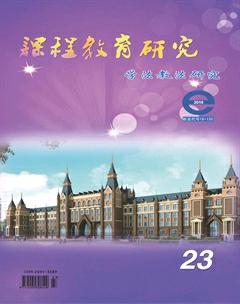Arbitrariness of Language
杨文娟
【Abstract】Arbitrariness is one of the design features of language. And a linguistic sign, the combination between the concept and the sound image, is arbitrary. There exist both absolute and relative arbitrariness. This paper aims to analyze the nature of the arbitrariness and through them, it can lead to explain the essence of many different langauge phenomena.
【Keywords】arbitrariness; linguistic sign; concept; sound image
【中图分类号】G64 【文献标识码】A 【文章编号】2095-3089(2016)23-0061-02
To start with, it is necessary for us to know that we study on arbitrariness on a synchronic stage instead of a diachronic stage, for what we need and want to know is how to have a better understanding of arbitrariness but is not to master the motivation or the origin of a word. As known, arbitrariness is one of design features of language, which means that there is no intrinsic connection between a word and the thing it refers to. For example, “book” by any other name is the thing we use to read.
According to Saussurean linguistic theories, arbitrariness is regarded as “the first principle of linguistics”. Before we analyze arbitrariness, it is necessary for us to have a good understanding of the linguistic sign. The linguistic sign is the combination of the concept and the sound image. Meanwhile, the linguistic sign is always a two-sided psychological entity in which the concept is not just the object but it is a reflection of something in our mind, and the sound image is not just a sound but it is the hearers psychological impression of a word. Besides these above, a linguistic sign is also regarded as a combination in which a signal is associated with a signification. And the point is the connection between a signal and a signification is arbitrary. For example, the concept “table”, which is a piece of furniture consisting of a flat top supported on one or more legs, has the sound images /teibl/ in English, (zhuozi) in Chinese and /tabl/ in French. There is no exact connection between the concept and the sound image. Then, lets take another example. We all know that there are many different dialects, besides Putonghua which is the common speech of Chinese languages, in China. When we come to study on the linguistic sign, we can still get different sound images from the same concept. For instance, “鞋子” has the sound image /xiezi/ in Putonghua, but it is pronounced as /haizi/ in Chongqing dialect or in Baitou dialect and it also has the sound /xiai/ in Henan dialect. As the example shows, although the sound images in different places are different, it does not mean that “鞋子” in these places are different things. Therefore, from the examples above, we can easily recognize the arbitrariness between the concept and the sound image or named the signification and the signal. Or in the contrast, if we deny the arbitrariness of the linguistic sign, we may find that no matter which country we live in in the world, the signs of the table and “鞋子” will totally apply to the same concept, and then there will be no different languages. Of course, this will never happen.
However, arbitrariness is not always absolute. There also exists relative arbitrariness. As one part of English vocabulary, onomatopoeic words, which are somewhat motivated, are the evidences for relative arbitrariness. As known, onomatopoeic words can be regarded as imitation of natural sound but they are not exact imitations. Specifically, we can deduce some characteristics of onomatopoeic words, for example, the bark of a dog. It seems that there is no arbitrariness between the concept and the sound image, but when we get to know the bark of a dog in other foreign countries, we will fond that there still exists the arbitrariness. In addition, the sound images of onomatopoeic words are always determined by certain phonological rules. For example, wow-wow in English and wang-wang in Chinese, they are all the bark of a dog. The relationship between the concept and the sound image is still arbitrary. So do compound words. It is certain that the linguistic sign is unmotivated but there really is motivated sign. For instance, shoe-maker is a compound word. There are two different constituents, which are “shoe” and “maker”. From them, we can find motivations when we analyze the structure of the word and the its concept, but it is unmotivated when we analyze the two constituents separately.
All in all, arbitrariness is a design feature of language. And the linguistic sign is arbitrary which means that the connection between the concept and the sound image or between the signification and the signal is arbitrary. Whats more, it is clear that there exist not only the absolute arbitrariness but also the relative arbitrariness.
References:
[1]Manfu, Duan. On the Arbitrary Nature of Linguistic Sign. In Theory and Practice in Language Studies, (vol. 2, No. 1), 2012: 54-59.
[2]段满福、李满亮,《实用英语语言学》.呼和浩特:内蒙古大学出版社,2007.
[3]罗宾斯,《普通语言学概论》.北京:外语教学与研究出版社,2000.
[4]胡壮麟、姜望琪,《语言学高级教程》.北京:北京大学出版社,2002.
——高建新教授

